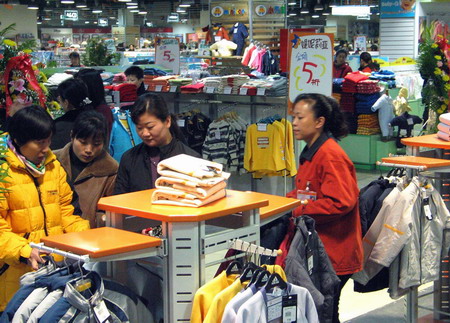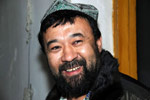Economy
Fashion, but at a bargain price
Updated: 2011-02-21 10:42
By Bao Chang (China Daily)
|
 |
|
Customers examine clothes at Yansha Outlets in Beijing. It was the first factory outlets mall in China, and was opened by Yansha Youyi Shopping City nine years ago. International luxury brands are attaching great importance to the new shopping style for Chinese customers. [Photo / Provided to China Daily] |
Discount outlets lure middle classes with quality brands at lower rates
BEIJING - The predilection of affluent Chinese consumers for luxury Western products has been well recorded, with branded shops sprouting up in all major cities.
Now discount retail outlets are trying to cash in on the burgeoning business by targeting the rapidly rising number of middle class purchasers with an eye for a bargain as well as style.
Typical of the success story enjoyed by many top brands in China is the UK's 155-year-old Burberry Group plc, a luxury fashion house manufacturing clothing, fragrance and fashion accessories. Its distinctive tartan pattern has become one of its most widely copied trademarks.
Burberry's sales growth in China at branded stores, franchises and concessions rose a record 30 percent last year, exceeding all expectations.
This has not gone unnoticed by discount retailers. Outlets (China) Limited, backed by Beijing Capital Land Ltd and China Infrastructure Group Ltd, invested 17 billion yuan ($2.6 billion) in three malls in Beijing, Guangdong and Zhejiang last year.
|
||||
Lin said top international luxury brands are attaching great importance of the outlet market in China. As a result, the company plans to open 30 stores over the next five to 10 years.
Outlet malls originated in the United States in the 1970s. They were first established in China by Yansha Youyi Shopping City in 2002. After that, the new retailing practice grew rapidly, bringing together hundreds of shops, both high-end and not so high-end luxury under one roof, usually outside a main city and near large expressway interchanges in China, rather than in expensive city center locations.
When they first opened in the United States, the country's annual per capita gross domestic product (GDP) was nearly $5,000. In 2002, China's annual per capita GDP exceeded $1,000 for the first time.
"Because of growing consumption, people's enhanced brand awareness and rising GDP, the outlet market will increase by 15 to 20 percent within the next five to 10 years," said Zhao Xueqin, a retail analyst at CITIC Securities.
According to CITIC Securities, China now has more than 200 outlet malls across the country. However, there are only 10 that meet international standards.
Zhao said Shanghai Bailian Group Ltd and Beijing Yansha Youyi Shopping City, both of which have long experience in retailing and a powerful ability to attract famous brands, will probably lead the development of the market over the next few years.
CITIC Securities reported that Qingpu Outlets, backed by Shanghai Bailian, witnessed an increase in net profits of 50 percent from 2006 to 2009. In 2009, the net profits of the mall reached 39 million yuan, a 31.6 percent increase year-on-year.
Specials

Spring Festival
The Spring Festival is the most important traditional festival for family reunions.

Top 10
A summary of the major events both inside and outside China.

A role model
Alimjan Halik had been selected as the "Cyberspace Personality Who Moved the Hearts of the Chinese in 2010".



